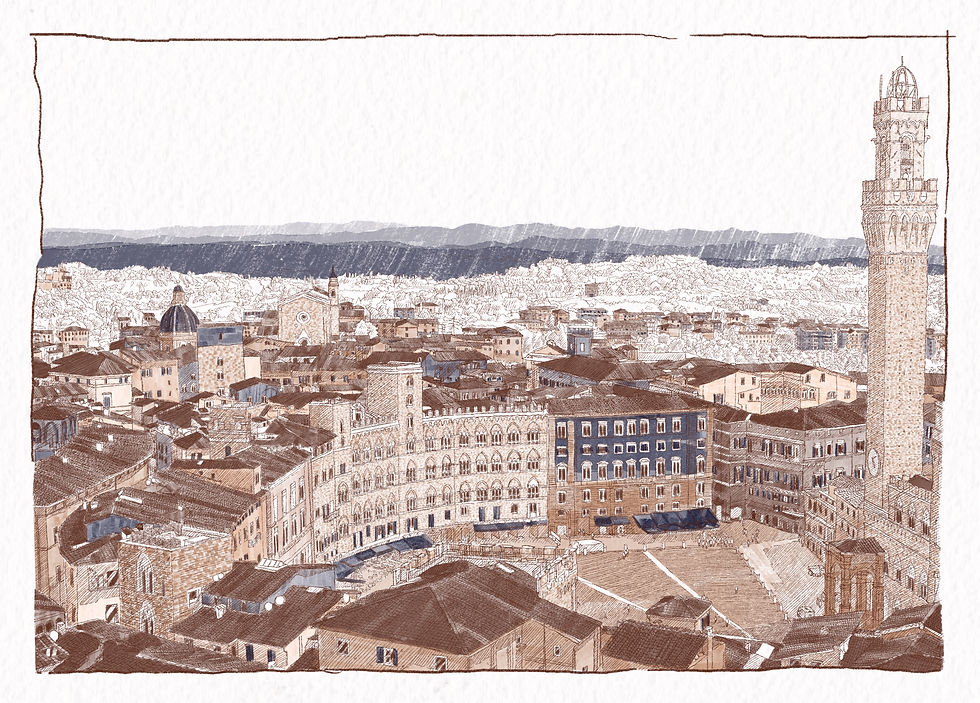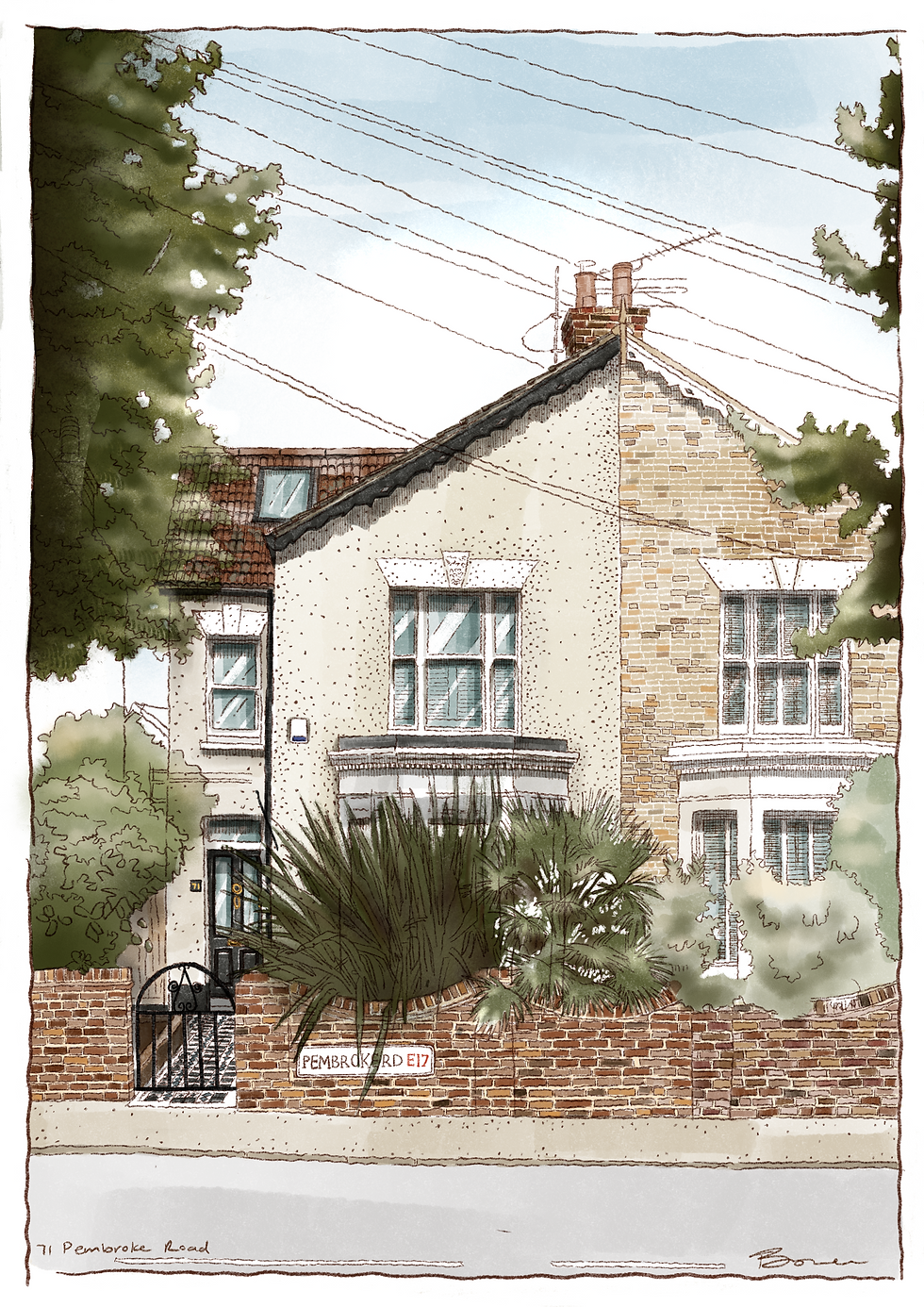BE INSPIRED | FEATURE 06 Tanatswa Borerwe
- Johannah Fening-Ajakaiye

- Jun 26
- 4 min read
In our latest interview, Architect and Illustrator Tanatswa Borerwe shares how hand-drawing, storytelling, and lived experience shape her work.
From Zimbabwe to North London, from sketchbooks to estate regeneration, Tanatswa’s journey reminds us that visual storytelling is beautiful and powerful. It invites conversation, builds trust, and makes design more human.

Share a bit about yourself.
I'm a Zimbabwean-born, London-based architect and illustrator. I moved to the UK when I was 11 and have lived in North London ever since. I’m a qualified architect working in the residential sector, with a specialism in community-led design and public engagement. Alongside this, I run an illustration practice where I translate architectural ideas into rich, accessible narratives through drawing.
Your work merges architecture, illustration, and storytelling, what inspired you to take this path?
Drawing has always been a way for me to understand the world. As a child, it helped me make sense of migration, place, and belonging. As I grew into architecture, I realised how powerful visual storytelling could be especially when working with communities. My work sits in that space: using illustration not as decoration, but as a means to communicate, question, and imagine.

How has being a Black female architect shaped your perspective on design and engagement?
It’s made me deeply aware of the spaces and stories that are often left out of the architectural narrative. I’ve experienced firsthand what it feels like to not see yourself represented in the built environment or in the profession. That awareness fuels my approach to design. I centre the everyday lived experiences of people like me, and I design with empathy, humility, and curiosity.
What challenges have you faced in blending architecture with artistic expression, and how have you navigated them?
Architecture can sometimes feel rigid, process-driven, and focused on deliverables, while illustration is fluid and interpretative. The challenge has been in convincing people—clients, colleagues, even myself at times—that drawing isn’t just aesthetic; it’s a powerful communication tool. I’ve navigated this by being intentional with my drawings, creating pieces that demonstrate impact, whether that’s through community workshops or elevating unseen narratives.

You use drawing as a tool to engage communities and make design ideas more accessible—why is this important?
Because everyone deserves to understand and contribute to the spaces they inhabit. Technical drawings can alienate; illustration invites conversation. When you sketch a street someone grew up on or visualise a future home with care and accuracy, people feel seen and they open up. That’s the starting point for meaningful engagement and equitable design.
How do you think architectural narratives can be reimagined to better serve underrepresented voices?
Moving away from the idea that architecture is just about buildings can help, It’s about people, memory, identity, and hope. We reimagine narratives by listening first, and then reflecting those stories back through design. We include non-linear timelines, personal histories, cultural nuances and we create room for those who are often spoken for to speak for themselves.

In an industry increasingly reliant on digital modelling tools and no emerging AI trends, why do you champion hand-drawing and visual storytelling?
Because drawing slows you down. It makes you observe, absorb, and interpret the world with intention. In contrast to AI, which is often about speed and replication, hand-drawing is about authorship. It’s an extension of who you are and what you see. For me, that’s irreplaceable. Plus, people connect more easily with a sketch, it’s human.
Are there any projects or illustrations you’ve created that particularly embody your mission?
Yes my illustrations for an estate regeneration project capture this. After residents struggled to understand 2D plans, I created 3D axonometrics of proposed homes, filled with activity and life. The shift was immediate—people engaged, questioned, and even got excited. That response showed me how powerful visual accessibility can be in reshaping public conversations around housing.

Many young architects struggle with confidence in their own creative approach. How did you find your voice and style?
By being honest about what I loved. I used to hide the fact that I enjoyed drawing people and everyday moments, thinking it wasn’t “architectural” enough. But once I embraced it, everything aligned. I found mentors and peers who valued storytelling, and I permitted myself to explore. That’s when my work started resonating.
Have you ever doubted your path? If so, what kept you going?
Absolutely. Especially in moments where I felt like I had to choose between architecture and illustration. But what kept me going was purpose. I realised I didn’t have to pick one I could create a practice that honoured both. Seeing the impact of my work in community settings also reminds me that this path matters.

If you could go back and give student Tanatswa one piece of advice, what would it be?
Trust that your difference is your strength. The things you think make you an outsider—your background, your voice, your love for drawing are exactly what will set you apart. Keep sketching. Keep asking questions. And don’t be afraid to take up space.
Connect with Tanatswa:






Comments